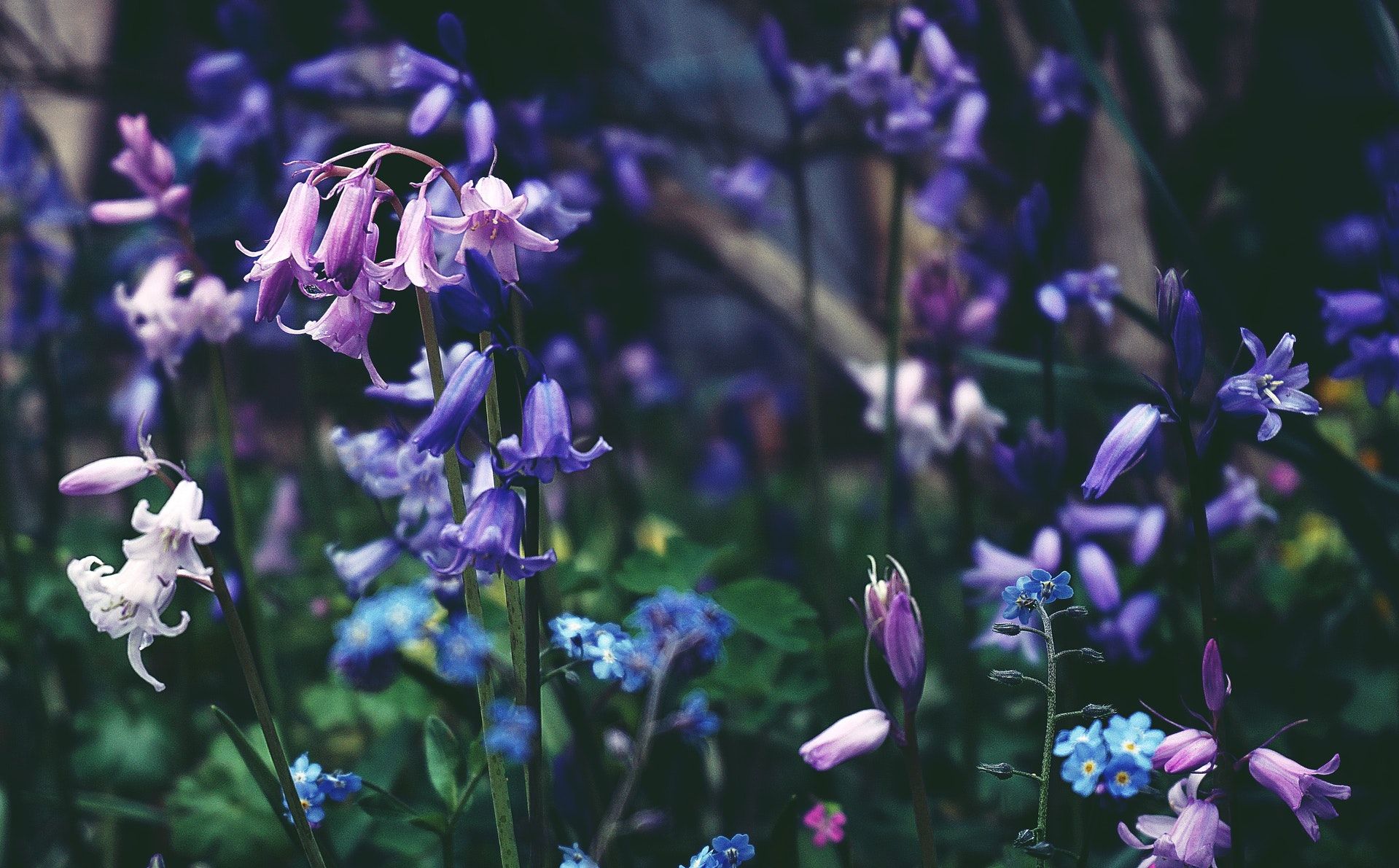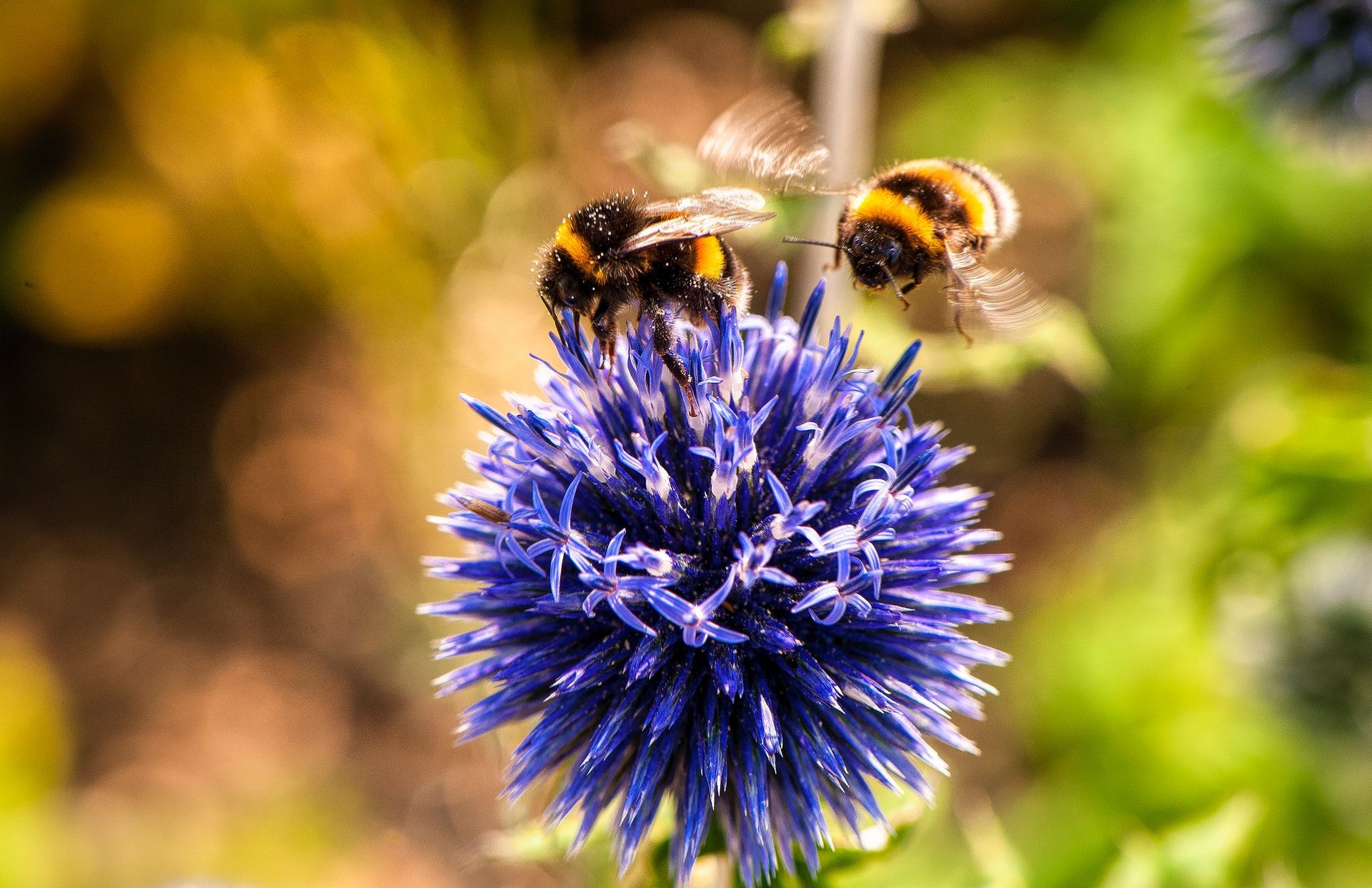
Gene Editing & Puffin Count
The latest news on nature and conservation in Britain.
National news
Genetics | The government has introduced a Genetic Technology Bill to Parliament this week, which allows the genetic editing of plants in an effort to grow more resistant, nutritious and productive crops. The new legislation will only apply to plants, not animals, and removes barriers to research into new gene editing technology now that the UK is not bound by EU regulations. Importantly, the bill does not extend to genetically modified (GM) products, which involves introducing genes from different species. However, some environmental groups have dismissed the distinction between the two. Kierra Box, of Friends of the Earth, said: “It still focuses on altering the genetic code of plants and animals to deal with the problems caused by poor soils, the over-use of pesticides and intensive farming.” There is also a cross-border dispute: the Scottish and Welsh governments plan to stick with the stricter EU regulations, but environment secretary George Eustice has asked them to reconsider their opposition, reports the BBC. The bill has been widely covered in national news: the BBC, the Times, the Guardian, and the Daily Mail all reported in the news. A blog by the Rare Breeds Survival Trust outlines the difference between genetic editing and traditional breeding, and why they believe the two cannot be compared.
Beavers | Legal killings of ‘problem’ beavers in Scotland have fallen since last year, according to licensing figures published by NatureScot. The 2021 figures show that a total of 120 beavers were removed from areas in Tayside to prevent serious damage to agriculture: of these, 87 beavers were killed under licence, compared with 115 in 2020, and 33 were trapped and moved elsewhere. NatureScot has said it is confident that these 120 animals – which represent around 10% of the total estimated population – will not have a negative impact on beaver conservation status. The Scotsman covered the news. Elsewhere, an “unconventional” beaver-themed rewilding garden at the RHS Chelsea Flower Show has won top prize. The garden featured a beaver dam with pre-gnawed sticks, a pool with a lodge, and UK native plants designed to look “wild” rather than pruned. The Guardian and the Evening Standard reported the story.
Recovery | The government has launched five landmark nature recovery projects to protect wildlife and improve access to nature. The landscape-scale projects span over 99,000 hectares of land in the West Midlands, Cambridgeshire, the Peak District, Norfolk and Somerset. Defra and Natural England are providing an initial £2.4m in funding to share between the projects, with further funding expected from other sources and partners. Work will range from converting farmland into chalk grassland to restoring “dewponds” and managing wetlands sustainably, as well as working with communities and deprived areas to improve their access to nature. The environment minister Rebecca Pow said: “These five projects across England are superb examples of exciting, large-scale restoration that is critically needed to bring about a step-change in the recovery of nature in this country.” The BBC, the Guardian and ENDS reported the news; the BBC also profiled the project planned in the Peak District’s Wye Valley, while Somerset Wildlife Trust set out their local priorities for nature recovery under the new scheme.
In other news:
- The HS2 High Court hearing this week threatens to “crush people’s right to peacefully protect nature”, according to the BBO Wildlife Trust.
- Record numbers of Britons are signing up for allotments during the cost-of-living crisis, reports the Times.
- The government, charities and industry have launched a campaign over biosecurity at the RHS Chelsea Flower Show.
- A four-year project led by ecologist Derek Gow seeks to restore glowworms across southern England, reports the Guardian.
- Hard-right Conservative MPs have joined a campaign against the environmental land management scheme, reports the Guardian.
- Prince Charles has urged nations to to learn from indigenous communities to help save the planet, reports the BBC.
- Rural campaign group Countryside Alliance Wales has launched a petition calling on the Welsh government and Natural Resources Wales to stop planting trees on farmland, reports Nation Cymru.
Across the country
Northumberland | National Trust rangers have returned for the annual puffin count on the Farne Islands for the first time since the pandemic began. The survey is vital for understanding the health of Atlantic puffin breeding colonies, with climate change posing a serious threat due to more frequent winter storms and stresses on food chains. The feeling is that the breeding colonies on the islands are in good shape, according to Harriet Reid, an area ranger, but the 2022 count will be important for tracking population trends. The survey itself is a very low-tech count: it involves rangers sticking their arms down puffin burrows, in order to feel either an egg, a puffling, excrement, nothing, or the annoyed reaction of a disturbed adult puffin. The Guardian and Chronicle Live covered the story, and the Guardian also published a gallery of photos for a closer insight into the count.
Shropshire | Europe’s first living biobank is celebrating having banked tissue samples from over 100 species. The biobank is run by the charity Nature’s SAFE, which aims to save animals facing extinction by freezing living cells that could then be used to establish pregnancies in the following decades. The charity is an offshoot of Stallion A1 Services, an organisation specialising in freezing sperm from prized show horses. Now, the team of 30 at Whitchurch have worked together with Chester, Paignton and London Zoos to transfer their skills to saving endangered animals. The hundredth species to join the collection was the Owston’s civet, found in southeast Asia. The Shropshire Star reported the story.
Exmoor | A carpet of bluebells has sprung up in Bye Wood, Exmoor National Park, despite being dormant for hundreds of years. Although the area has been an open hilltop for centuries, the stunning display suggests the site might once have been covered in trees. A new 12-hectare woodland is more than halfway through being planted, and woodland officers believe that by controlling the bracken and planting trees the suppressed bulbs have been re-activated. Senior woodlands officer Graeme McVittie said: “These are ancient woodland indicators, so we are in a sense re-creating the conditions for an ancient woodland.” The Somerset County Gazette covered the story.

Elsewhere:
- The RSPB is seeking planning permission to revive Catfield Fen, a conservation area on the Norfolk Broads that is in “unfavourable decline”, reports the Eastern Daily Press.
- A realistic life-sized model of a beached whale has appeared on Redcar beach in northeast England as part of an interactive street theatre spectacle drawing attention to climate change, reports the Northern Echo.
- Energy firm Orsted has suggested culling black rats on Sark to offset disturbance to seabirds caused by wind turbines, reports the BBC.
- The Chiltern Conservation Board has asked people to stop feeding red kites in the area as they are dropping scraps of meat on people's heads, reports the BBC. The organisation said the birds are doing well and do not need feeding.
- National Highways are carrying out surveys after a “large proportion” of the 80,000 trees planted as part of the A14 upgrade between Cambridge and Huntingdon have died, reports the BBC.
- Suffolk County Council has promised to tackle river pollution after a report found that none of its rivers met government targets for good water quality, reports the BBC.
- Local wildlife groups in Guernsey are reminding people to cut their hedges in a wildlife-friendly manner, reports the BBC.
- Staffordshire Wildlife Trust is objecting to proposals for 330 homes to be built on greenfield land, reports the Stoke Sentinel.
- Nature Recovery Rotherham has welcomed Rotherham Borough Council’s decision to declare a nature crisis.
- Investigations by the Environment Agency are underway at two watercourses in Wadebridge, Cornwall, after reports of pollution and dead fish, according to the BBC.
Reports
Food | A research paper by Chatham House, an international affairs think-tank, investigates the debate around sustainability in agriculture, and what we actually mean by a “sustainable food system”. The paper compares two distinct versions of agricultural sustainability: the first focuses on sparing land for nature by increasing the productivity of agricultural land, while the second focuses on scaling up nature-friendly farming and emphasising demand changes to reduce overall pressure on land. The paper argues that both versions are founded more on ideological assumptions than on scientific evidence, and their progression will likely be determined by a political and ideological process. The authors conclude that the future is most likely to see a combination of both versions, or a system which occupies the middle ground between the two.
Hares | A citizen science survey of Scotland’s mountain hares has resulted in a substantial increase in sightings, according to a report published by NatureScot. Last year, hillwalkers, animal surveyors and outdoor enthusiasts were asked to take part in a novel on-the-ground survey, recording sightings using a free smartphone app to shed light on the distribution and numbers of the charismatic animal. A total of 66 volunteers surveyed 1,465km, recording hares in some new areas such as near Loch Ewe in the northwest Highlands, as well as previously known strongholds. Mountain hares are classed as near threatened in Scotland on the UK Red List, and were given full protection in March 2021.
Community | Community Land Scotland has published a report exploring how the ownership and governance of land in Scotland needs to evolve if the Scottish government is to deliver on its policy objectives of a just transition to net-zero. The report examines a range of different business models being used by environmentally-minded landowners in Scotland – including the so-called ‘Green Lairds’ – and explores their primary motivations. Perhaps unsurprisingly, the authors find that community ownership provides the most effective means of ensuring that wealth created in Scotland is retained and redirected back into local communities, while absentee corporate and individual ownership delivers the weakest return for community wealth-building. To achieve the government’s policy objectives, the authors argue that fundamental reforms to the ownership of Scottish land are required, and make key policy recommendations here. Laurie Macfarlane, co-author of the study tweeted a helpful short thread based on the report.
Science
Bumblebees | Multiple habitats need protection to save British bumblebees, according to a study published in the Journal of Applied Ecology. The study used ten years' worth of citizen science data from the Bumblebee Conservation Trust to provide a detailed overview of bumblebee habitat requirements. Researchers found a wide range of different needs, suggesting that a one-size-fits-all approach to conservation will not protect all species. Arable areas were found to be important for rare species like the large garden bumblebee, while large areas of semi-natural land like moorland were important for the moss and the brown-banded carder bees and the bilberry bumblebee.

Woodland | A study in the Journal of Environmental Management looks at the impact of woodland management on 13 woodland bird species in the UK. Over the course of 7-9 years, researchers tracked how different woodland management options, designed to influence the structure of mainly broadleaf woodlands, impacted specialist woodland bird species in the East Midlands. They found an increase in abundance of target species on managed sites, compared to an overall decrease on control sites. Changes in woodland structure generally consisted of lower tree density and greater bramble cover. The authors conclude that bespoke woodland management supported by government agri-environment incentives can have a positive impact on targeted species and deliver biodiversity gains.
Pollinators | Half of Britain’s remaining butterfly species are now classed as Threatened or Near Threatened in the latest update to the ‘Red List’, published in Insect Conservation and Diversity. Time is running out to save many of the 58 resident British species, according to the Butterfly Conservation, which gathered the data following strict IUCN criteria. However, there are also some positive trends on the list. Two of the species most threatened with extinction, the large blue and the high brown fritillary, have moved out of the most at-risk category after targeted conservation work. The Guardian, the BBC, the Times and BirdGuides covered the news. Separately, Defra has launched a new app to encourage the public to count bees, butterflies and other pollinators. The ‘Flower-Insect-Timed Count’ (FIT Count) is a free app which asks people to spend ten minutes of their day collecting data on the number of insects that visit particular patches of flowers. The efforts are part of Defra’s new Pollinator Action Plan, which aims to spread awareness about how to help pollinators.
Driftwood
Orchids | The arrival of exotic orchids in Britain is a sure sign of our warming climate, writes Paul Simons in the Times. Orchids from Europe are particularly good at taking advantage of England’s changing climate because their tiny seeds are light enough to easily blow across the Channel. Among the new arrivals are the tongue orchid and the Himantoglossum robertianum (a close cousin of the lizard orchid). Meanwhile, bee orchids, which imitate the shape, yellow markings and furry texture of their namesake, have spread as far north as Glasgow and Edinburgh.
Tube | London’s new Elizabeth line was opened this week to much fanfare, but the hundreds of passengers who queued from the early hours to board the maiden train will not be the first to enjoy the benefits of the new line. A brand new nature reserve on Wallasea Island, Essex, has been created out of 3.5m tonnes of earth dug up during the construction of the new stations and 13 miles of tunnel. Already, thousands of birds have been enjoying the mosaic of lagoons, islands and bays run by the RSPB. Visitors include avocets, spoonbills, black-tailed godwits, little egrets, wigeon, teal and plover; during winter, hen and marsh harriers also appeared. Robin McKie for the Guardian describes it as “a nature lover’s paradise” created from the “detritus of one of the UK’s most complex, expensive, crisis-afflicted engineering projects of recent years”.
Scotland | Millionaires and billionaires are turning climate change into a trophy game by buying up Scottish land, according to Cathleen O’Grady in the Atlantic. The hunting and fishing souvenirs of old have been replaced by forests and peatlands, while other new owners aim to profit by managing the land for carbon storage and biodiversity. O’Grady’s longform feature delves into the “net-zero land rush” which is currently sweeping the country as both locals and wealthy ‘green lairds’ try to cash in. The trend of commodifying and financialising the climate emergency may go global, O’Grady says, but for now it is gathering pace in a small country with huge private land ownership and some of the world’s most valuable natural assets.
Further reading:
- Salmon-fisher and conservationist Andrew Douglas-Home searches for options to save Scottish salmon in this feature in the Times.
- A comment piece in the Sunday Times says that “stripes are out” for many lawns at the Chelsea Flower Show as more gardeners choose not to mow during May.
- Stephen Moss argues in the Guardian that the new ‘super reserve’ in Somerset is not just for birds; in fact, it could change the landscape of Britain by acting as a blueprint for sustainable countryside management.
- The Financial Times has a list of the best new books on climate and the environment.
- An editorial in the Guardian explores the delayed return of swifts back to UK skies, describing the species as “migrant birds carry[ing] information around the globe”.
- Nicola Chester, author of On Gallows Down, discusses her writing journey in Countryfile, and argues that nature-rich habitats should be part of everyday lives.
Happy days
Wildflowers | If you’re in need of some inspiration to venture out and bask in the glory of summer wildflowers, the Guardian has put together a handy list of the best UK wildflower spectacles. The locations range from the gardens of the Central Mosque in Cambridge to blooming machair grassland on the island of North Uist in the Outer Hebrides. Also in the Guardian is this feature on various lawn transformations during No Mow May.
Subscribe to our newsletter
Members receive our premium weekly digest of nature news from across Britain.
Comments
Sign in or become a Inkcap Journal member to join the conversation.
Just enter your email below to get a log in link.








